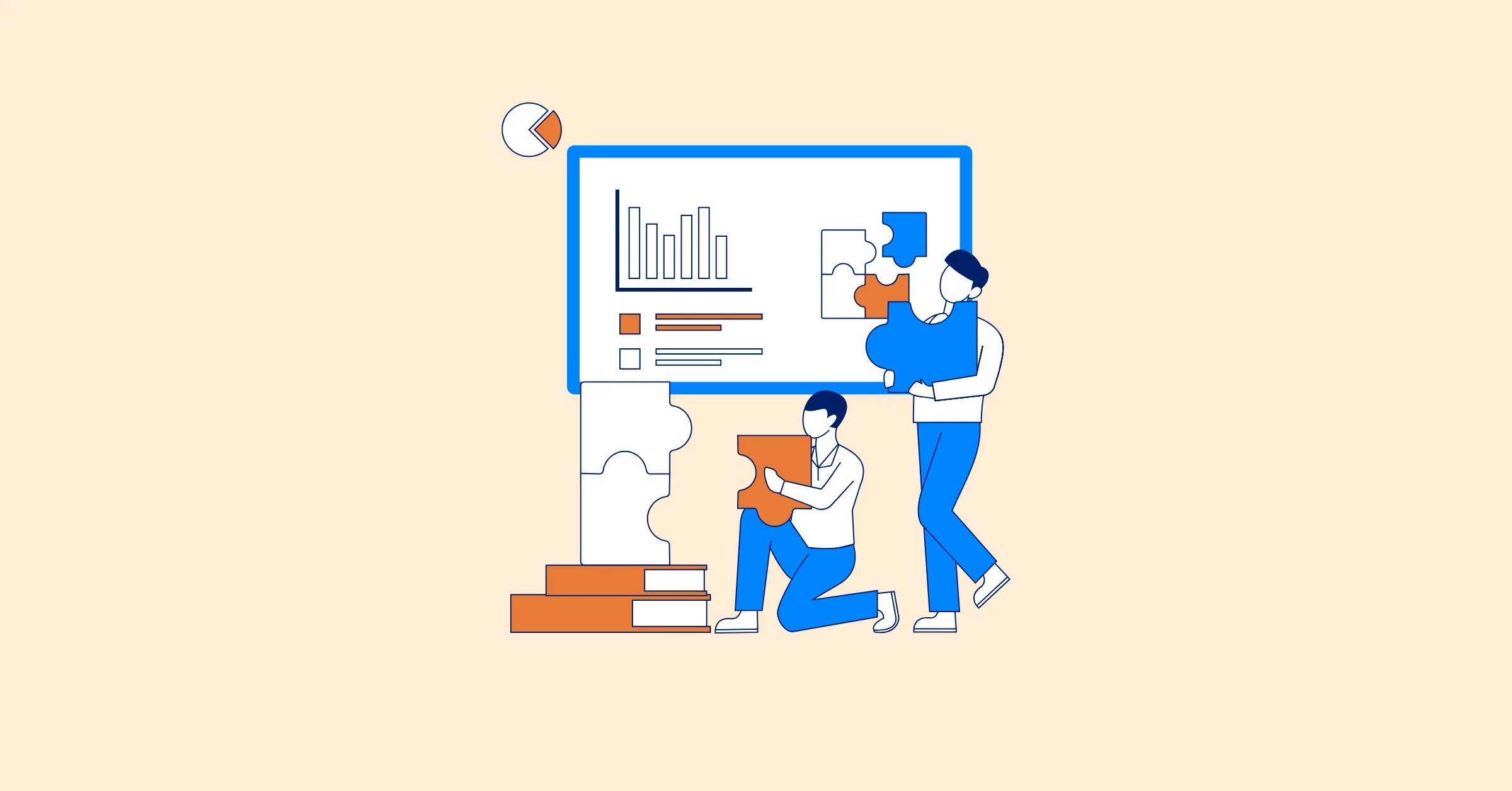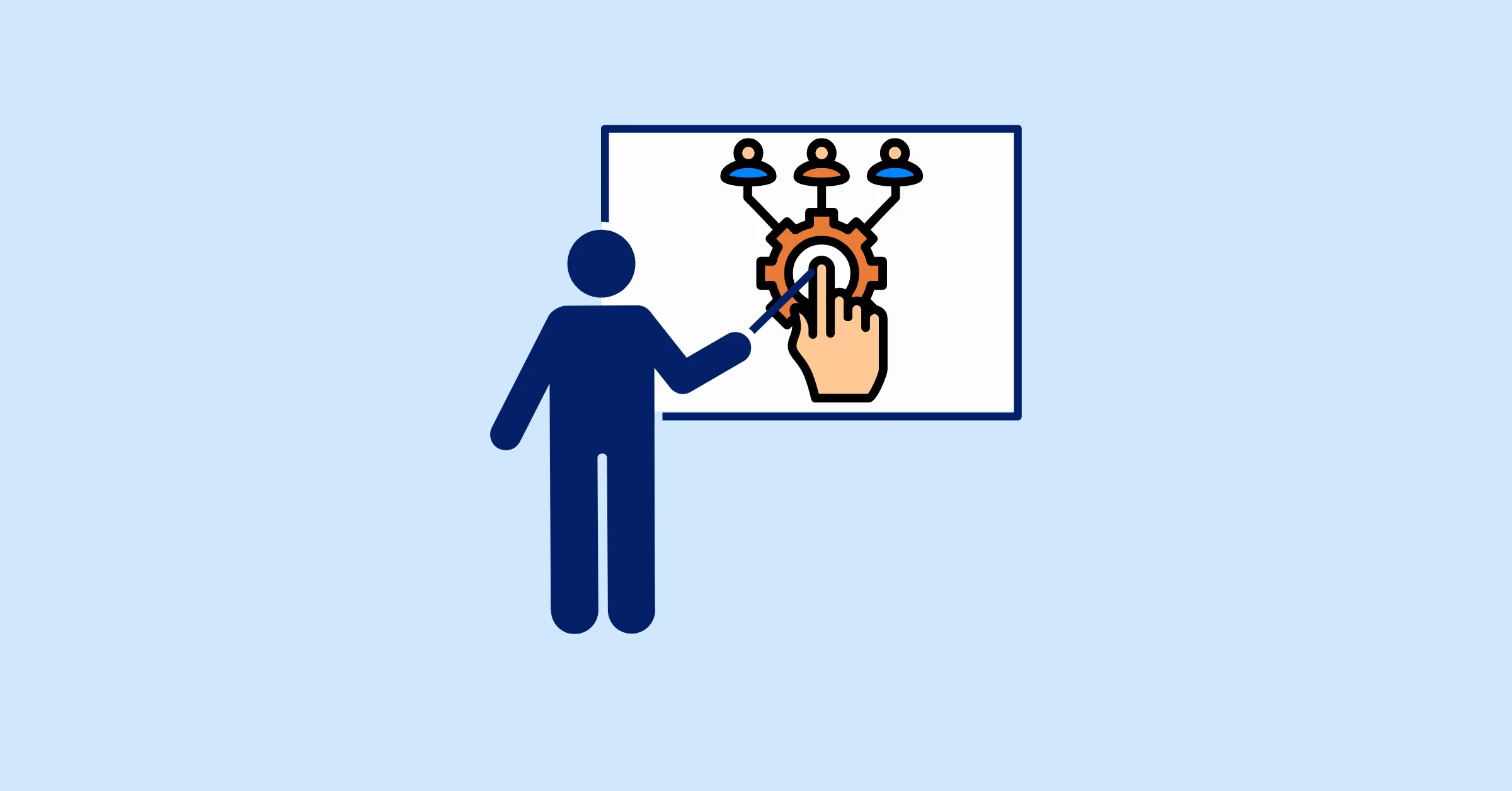Human Resource Planning: Strategies for 2025 and Beyond
Stay ahead of the curve with proven human resource planning techniques designed to tackle the evolving challenges of 2025 and beyond—learn how to future-proof your talent strategies now!
Diving into human resource planning strategies in 2025 can feel a bit like embarking on a road trip without a map—overwhelming, yet utterly exciting. You’ve got a talented crew on board, some tried-and-tested HR strategies, but the terrain ahead appears unpredictable and ever-changing. Yikes! So how do you plan for a future that’s constantly shifting?
Hang tight—because in today’s fast-paced and hyperconnected global market, the playbook for human resource planning has changed drastically. Companies worldwide aren’t simply focusing on filling positions anymore. They’re concentrating on nurturing potential, boosting agility, and, above all, creating resilient teams capable of adapting to rapid marketplace transformations. And if you’re wondering whether this is just one more management fad? Well, think again!
In this article, we’ll explore the nitty-gritty of human resource planning for the coming years, dish out a few handy strategies, and highlight the pitfalls you’ll want to avoid. After all, what’s the point in driving full throttle when you don’t even know where you’re headed, right? So buckle up and let’s get started!
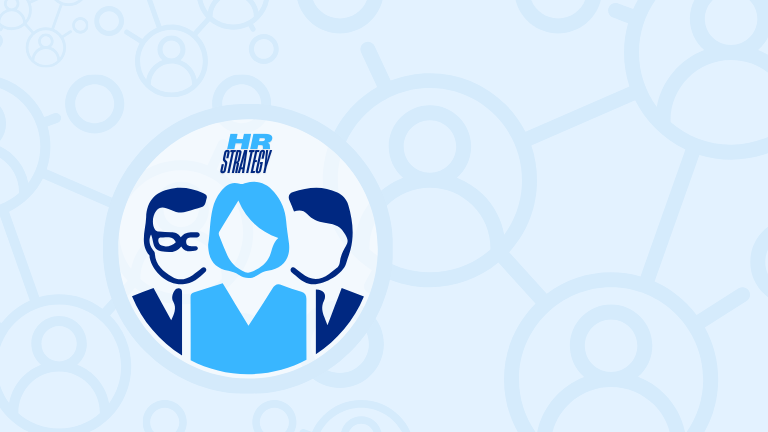
Key Takeaways
Ultimately, human resource planning for the future hinges on adaptability, agility, and empathy. You’ve got to keep your ears to the ground for market shifts, be open to technological changes, and, most importantly, be human-centric in your approach.
- Don’t let a single strategy define your future—mix it up!
- Forecast potential challenges and arm yourself with flexible solutions.
- Remember: a happy, engaged team is your best asset.
The Evolution of Human Resource Planning

Before we jump into the nuts and bolts of forecasting your workforce needs, let’s take a brief look at how resource planning for HR has evolved over time. A couple of decades ago, human resources efforts seemed limited to administrative tasks—recruit, onboard, and manage. Bam, done. But those days are long gone. Today, human resource planning must be strategic, data-driven, and downright innovative if organizations want to stay competitive.
1. Shifting from Administration to Strategy
Gone are the days of seeing HR as the “paper-pusher” department. Now, it’s a powerhouse of strategic thinking. Dangling modifiers aside, the ability to forecast future needs, align talent with business objectives, and create a work culture brimming with innovation rests firmly on the shoulders of modern HR professionals. That’s a tall order, isn’t it?
Key Highlights
- Data-Driven Decisions: Leveraging analytics and AI to predict turnover, skill gaps, and hiring needs
- Long-Term Vision: Aligning recruitment and development initiatives with the company’s overall mission
- Employee Experience: Shifting focus toward holistic well-being, diversity, and inclusion
2. Technological Advancements and Automation
Technology has made it infinitely easier to track employee performance, collect feedback, and everyday task management HR. On the flip side, it also pushes companies to rethink human resource planning strategies. Sure, some repetitive tasks can be automated, but this opens doors for creating new roles focused on oversight, quality control, and innovation.
Technology Tools to Watch
- AI-Enabled Recruitment Platforms: Reduce bias, speed up hiring
- Cloud-Based HR Systems: Streamline record-keeping and real-time updates
- Employee Self-Service Portals: Empower staff to manage their own data
3. The Gig Economy Boom
It’s no secret—temporary or contractual work arrangements are here to stay! From freelancers to consultants, the gig economy is reshaping the way we think about “traditional” employment structures. Consequently, organizations need to incorporate flexible workforce planning models to keep pace with shifting talent availability.
Why the Gig Economy Matters
- Rapid Scalability: Bring on specialists for short-term or seasonal projects
- Cost-Effectiveness: Avoid hefty overheads tied to full-time roles
- Global Reach: Access diverse talent beyond geographical boundaries
Workforce Forecasting: A Must-Have Skill
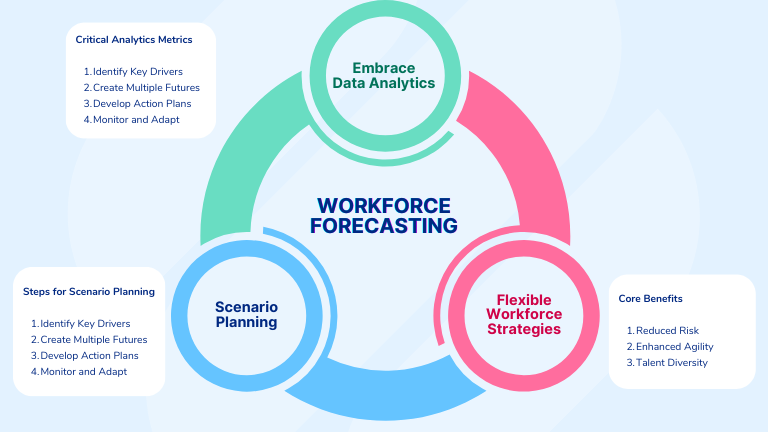
What’s the point in talking about human resource planning if you’re not going to forecast who you’ll need, when you’ll need them, and why? By anticipating shifts in market trends, technology, and consumer behavior, companies can map out their workforce needs more accurately.
1. Embrace Data Analytics
Data analytics is your secret weapon for workforce decisions. It helps identify patterns in everything from employee turnover to promotion rates. It’s like having a crystal ball—minus the hocus-pocus. With real-time data at your fingertips, you can spot red flags and address potential issues long before they escalate.
Critical Analytics Metrics
- Turnover Rates – Indicates retention issues and potential cracks in company culture
- Time-to-Fill – Highlights efficiency in hiring processes
- Cost-per-Hire – Measures overall recruitment expenses
- Training ROI – Evaluates value gained from skill-development programs
2. Scenario Planning
Scenario planning is creative problem-solving for HR. You brainstorm different future possibilities—good, bad, and downright apocalyptic—and plan how your team would respond. It’s like a safety net that catches you if (or when) the unexpected strikes.
Steps for Scenario Planning
- Identify Key Drivers: Market conditions, technology disruptions, policy changes
- Create Multiple Futures: Best-case, worst-case, and moderate projections
- Develop Action Plans: Outline HR strategies for each scenario, focusing on skill gaps and hiring demands
- Monitor and Adapt: Keep tabs on new developments and adjust your approach as needed
3. Flexible Workforce Strategies
Being locked into rigid workforce structures can hamper an organization’s adaptability. Instead, incorporate contingent workers, automate tasks where feasible, and cross-train employees. This ensures your team can pivot swiftly when unforeseen challenges arise.
Core Benefits
- Reduced Risk: Avoid heavy losses during economic downturns
- Enhanced Agility: Deploy talent quickly to areas of greatest need
- Talent Diversity: Infuse fresh perspectives and specialized skill sets
Strategies for 2025 and Beyond
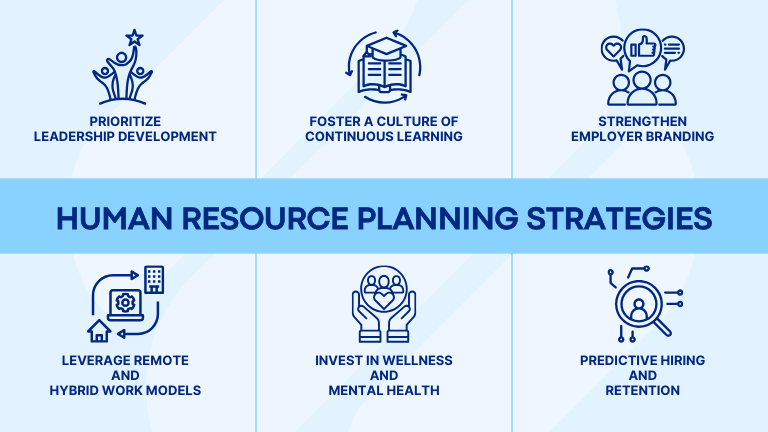
Now, let’s talk actionable HR strategies that’ll guide you through 2025 and beyond. With these tried-and-true approaches, you’ll be ready to take on any curveball. After all, ain’t nobody got time to be caught off-guard!
1. Prioritize Leadership Development
In the swirling storm of market competition, robust leadership can be your organization’s anchor. No joke! Developing future leaders ensures that as roles shift or people exit, someone is always ready to step up.
Action Points
- Offer leadership workshops focusing on emotional intelligence, strategic thinking, and communication
- Identify high-potential employees early and expose them to bigger responsibilities
- Promote mentorship programs pairing junior staff with seasoned leaders
2. Foster a Culture of Continuous Learning
With technology evolving faster than you can say “digital transformation,” employee skills can become outdated in the blink of an eye. That’s why a culture of continuous learning is crucial—especially when you’re serious about human resource planning.
Building a Learning Culture
- Micro-Learning Modules: Provide bite-sized courses for busy employees
- Cross-Department Projects: Encourage collaboration and idea-sharing
- Open Feedback Loops: Allow everyone to share learnings and best practices
3. Strengthen Employer Branding
Picture this: You’ve got the perfect job opening, great pay, and a supportive work environment, yet nobody’s applying. Why? Because in the vast digital ocean of job reviews and social media chatter, your brand presence just doesn’t pop. Building a strong employer brand is no longer optional; it’s critical for attracting top-tier talent.
Employer Branding Tactics
- Keep your LinkedIn page active with employee success stories and company milestones
- Offer perks that resonate with modern workforces (flexible hours, mental health days, etc.)
- Celebrate diversity and inclusion initiatives publicly
Since we're here to talk about employer branding, don't hesitate to give us a shout out and follow us on LinkedIn, Facebook, X.com, and YouTube. Much appreciate!
4. Leverage Remote and Hybrid Work Models
Still wondering if remote or hybrid models are right for your business? The pandemic taught us that location is just a detail. Embracing flexible work arrangements not only broadens your talent pool but also increases employee satisfaction and productivity—a win-win!
Implementation Tips
- Set Clear Expectations: Define work hours, response times, and project deadlines
- Use Collaborative Tools: Slack, Microsoft Teams, or Google Workspace for real-time communication
- Foster Team Spirit: Virtual coffee breaks, quizzes, or informal chit-chats to maintain a sense of belonging
5. Invest in Wellness and Mental Health
Happy employees mean a healthier bottom line—no ifs, ands, or buts about it. Organizations that neglect mental health often face high turnover and low morale. Show your people that you genuinely care about their well-being, and watch the payoff in engagement and productivity.
Wellness Initiatives
- Counseling Sessions: Provide accessible mental health support
- Flexible Schedules: Help employees maintain work-life harmony
- Mindfulness Workshops: Teach stress-management techniques
6. Predictive Hiring and Retention
Wouldn’t it be neat if you could predict which employee might quit before they actually do? Predictive analytics allows you to do just that. By examining engagement scores, performance metrics, and market trends, you can proactively tackle rising attrition.
Predictive Strategies
- Engagement Surveys: Identify early warning signs of employee dissatisfaction
- Skill Assessments: Pinpoint gaps and offer relevant training to keep employees challenged
- Competitive Compensation: Stay informed about market rates and adjust accordingly
Tools That Can Help with Human Resource Planning
Modern challenges require modern solutions. Let’s face it—juggling recruitment, onboarding, performance reviews, and strategic initiatives is a handful. Fortunately, a range of intuitive platforms and software like TaskFord, TeamBoard, Monday.com, ClickUp, BambooHR, Workday or Zoho People can help you streamline processes, automate mundane tasks, maintain transparency, make your human resource planning more efficient, and free your HR team to focus on strategic growth.
Introducing TaskFord, an All-In-One platform with resource management, time tracking, cost management features to aid you in your human resource planning journey! Check it out and join our waitlist now to become our first users!
FAQs about Human Resource Planning
1. What is human resource planning? Human resource planning is all about aligning your organization’s workforce needs with its long-term goals. It involves forecasting future labor requirements, identifying skill gaps, and implementing strategies to recruit, develop, and retain the right people.
2. Why is data analytics important in HR? Data analytics helps predict turnover rates, skill gaps, and hiring demands, enabling more informed decisions. Rather than guess what might happen, you can rely on tangible numbers that provide clearer insights into your workforce.
3. Are remote and hybrid work models here to stay? Absolutely! Remote and hybrid setups have proven their worth. Employees often value the flexibility, and organizations benefit from a broader talent pool. It’s about finding a balance that supports productivity, collaboration, and work-life harmony.
4. How do we handle skill gaps quickly? Consider implementing continuous learning programs, cross-training employees, and bringing in temporary specialists or gig workers. By taking a proactive approach, you can nip skill gaps in the bud before they escalate.
5. Is employer branding really that important? Your employer brand is how current and potential employees perceive your company. A strong brand attracts top talent, fosters loyalty, and sets you apart from competitors offering similar compensation packages.
6. Can technology replace human roles entirely? While technology can automate repetitive tasks, it usually can’t replicate human attributes like creativity, empathy, or complex decision-making. A balanced approach—where automation complements, not replaces, the human element—is generally the most effective.
7. What role does mental health play in HR strategy? A massive one! Employee well-being directly impacts performance, retention, and overall morale. Organizations that invest in mental health support—such as counseling, flexible schedules, and wellness programs—often enjoy higher productivity and a more positive work environment.
8. How do tools like TaskFord, Monday.com, or ClickUp benefit HR teams? They centralize tasks, streamline communication, and provide real-time analytics. These platforms also automate mundane processes and give HR managers a bird’s-eye view of everything from recruitment funnels to performance metrics.
Conclusion
Crafting a solid strategy to approach human resource planningin 2025 is like cooking up a hearty meal—you need the right ingredients, the perfect recipe, and a dash of creativity to make it truly satisfying. Throughout this guide, we’ve highlighted the importance of forecasting workforce needs, nurturing leadership potential, leveraging technology, and building a strong, supportive culture. It’s no walk in the park, but with the right planning and a flexible mindset, your organization can stay on top of the game.
So, what’s next on your HR to-do list? Will you invest in AI-driven analytics? Maybe ramp up your employer brand strategy? Or perhaps incorporate modern project management tools like TaskFord, Monday.com, or ClickUp? Whatever you choose, just remember: agile human resource planning strategies are the driving force behind long-term organizational success—and you, my friend, are at the wheel.
Go forth, plan boldly, and watch your workforce thrive in the face of every twist and turn 2025 might throw your way!
Making work simpler,
smarter, and more connected
Join our waitlist and be notified first.

Related Blog
Subscribe for Expert Tips
Unlock expert insights and stay ahead with TaskFord. Sign up now to receive valuable tips, strategies, and updates directly in your inbox.




